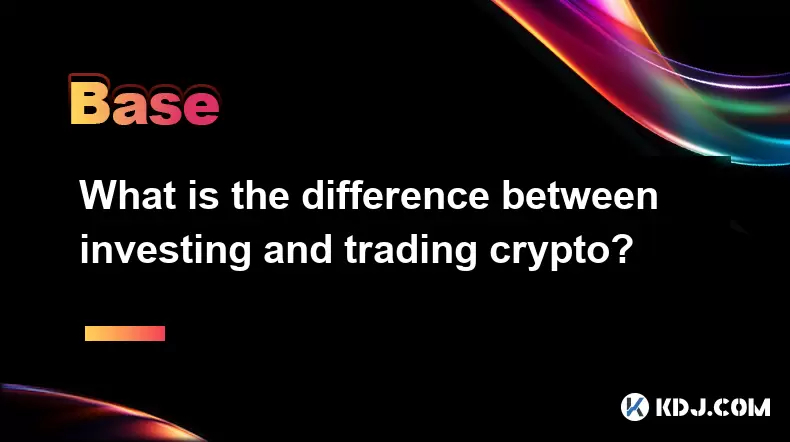-
 Bitcoin
Bitcoin $117400
0.05% -
 Ethereum
Ethereum $3767
0.13% -
 XRP
XRP $3.554
2.85% -
 Tether USDt
Tether USDt $1.000
0.01% -
 BNB
BNB $766.5
1.11% -
 Solana
Solana $196.6
8.51% -
 USDC
USDC $0.0000
0.01% -
 Dogecoin
Dogecoin $0.2716
-0.23% -
 Cardano
Cardano $0.8901
3.81% -
 TRON
TRON $0.3144
0.09% -
 Hyperliquid
Hyperliquid $44.52
-3.11% -
 Stellar
Stellar $0.4735
2.59% -
 Sui
Sui $3.978
2.18% -
 Chainlink
Chainlink $19.59
1.45% -
 Hedera
Hedera $0.2715
0.05% -
 Avalanche
Avalanche $25.48
1.87% -
 Bitcoin Cash
Bitcoin Cash $523.6
-4.49% -
 Shiba Inu
Shiba Inu $0.00001551
0.09% -
 Litecoin
Litecoin $115.9
-0.92% -
 UNUS SED LEO
UNUS SED LEO $8.992
0.06% -
 Toncoin
Toncoin $3.336
2.13% -
 Polkadot
Polkadot $4.510
0.70% -
 Uniswap
Uniswap $10.91
2.37% -
 Ethena USDe
Ethena USDe $1.001
0.02% -
 Pepe
Pepe $0.00001421
1.31% -
 Monero
Monero $320.2
-1.73% -
 Bitget Token
Bitget Token $4.950
0.14% -
 Dai
Dai $0.0000
-0.02% -
 Aave
Aave $323.3
0.00% -
 Bittensor
Bittensor $447.5
8.38%
What is the difference between investing and trading crypto?
Crypto investing focuses on long-term growth by holding assets like Bitcoin, while trading aims for short-term profits through frequent buys and sells based on market volatility.
Jul 21, 2025 at 10:57 am

Understanding the Core Definitions
The distinction between investing and trading crypto begins with understanding their core definitions. Investing refers to the act of allocating capital into assets with the expectation of long-term appreciation. Investors typically buy and hold cryptocurrencies like Bitcoin or Ethereum, believing in their long-term value. On the other hand, trading involves frequent buying and selling of digital assets to capitalize on short-term price movements. Traders aim to profit from market volatility rather than long-term growth.
Time Horizon and Holding Period
One of the most significant differences between investing and trading crypto lies in the time horizon. Investors usually adopt a long-term approach, often holding assets for months or even years. They are less concerned with daily price fluctuations and more focused on the overall trajectory of the asset. Traders, however, operate on shorter timeframes, ranging from minutes to weeks. Day traders, for example, may open and close positions within the same day, while swing traders might hold positions for a few days or weeks to capture price swings.
Risk Tolerance and Capital Exposure
The level of risk involved in crypto activities varies significantly between investing and trading. Investing typically involves a lower risk profile, as investors spread their capital across a few high-quality projects and avoid frequent market exposure. Their strategy often includes dollar-cost averaging (DCA), where they invest fixed amounts regularly regardless of price. Trading, by contrast, demands higher risk tolerance, as traders are exposed to rapid market movements, leverage, and emotional decision-making. Traders often risk a larger portion of their portfolio in pursuit of quick gains.
Strategy and Decision-Making Process
The decision-making frameworks used by investors and traders differ greatly. Investors rely on fundamental analysis, evaluating factors like the project’s use case, team, technology, and adoption rates. They may also assess macroeconomic trends and long-term market sentiment. Traders, however, focus on technical analysis, using charts, indicators, and patterns to predict short-term price behavior. They often set stop-loss and take-profit orders to automate risk management and avoid emotional trading.
Tools and Platforms Used
The tools and platforms favored by investors and traders reflect their differing strategies. Investors tend to use long-term storage solutions, such as hardware wallets, and trade on reputable exchanges with strong security and low fees. They may also use portfolio tracking apps to monitor their holdings over time. Traders, in contrast, require real-time data, advanced charting tools, and margin trading capabilities. They often use platforms like Binance, Bybit, or Kraken, which offer features like leverage, futures contracts, and algorithmic trading options.
Profit Motivation and Exit Criteria
Profit objectives also set investors and traders apart. Investors seek capital appreciation over time, exiting only when their long-term goals are met or when there’s a fundamental shift in the project’s outlook. They may reinvest gains or diversify into other promising assets. Traders, however, aim for frequent, smaller profits, exiting positions when predefined targets or market signals indicate a reversal. Their exit criteria are often based on technical levels, volume spikes, or news-driven volatility.
Frequently Asked Questions
Can I do both investing and trading in crypto?
Yes, many individuals engage in both strategies. You can allocate a portion of your portfolio to long-term investments while actively trading another portion. However, it’s crucial to maintain clear boundaries and risk management rules for each approach.
Do I need a large amount of capital to start trading crypto?
No, you can begin trading with a small amount of capital. Many platforms allow micro-trading, and you can start with a demo account to practice before committing real funds. However, trading with small capital increases the impact of fees and slippage.
Is one method more profitable than the other?
Profitability depends on skill, strategy, and market conditions rather than the method itself. Some investors have seen significant returns over time, while experienced traders can generate consistent income from market fluctuations.
How do taxes apply differently to investing and trading crypto?
Tax treatment varies by jurisdiction, but generally, long-term investments may qualify for lower capital gains tax rates, while short-term trading is often taxed as ordinary income. Always consult a tax professional familiar with cryptocurrency regulations in your region.
Disclaimer:info@kdj.com
The information provided is not trading advice. kdj.com does not assume any responsibility for any investments made based on the information provided in this article. Cryptocurrencies are highly volatile and it is highly recommended that you invest with caution after thorough research!
If you believe that the content used on this website infringes your copyright, please contact us immediately (info@kdj.com) and we will delete it promptly.
- Bitcoin, Trump Media, and Acquisition: A New York Perspective
- 2025-07-22 06:30:12
- Venture Capital, Crypto Treasuries, and Ethena (ENA): A New York Perspective
- 2025-07-22 06:50:13
- Solana: Building a Decentralized Nasdaq with Block Assembly Marketplace?
- 2025-07-22 06:30:12
- Jito, BAM, and Solana MEV: A New Era for Blockspace?
- 2025-07-22 06:50:13
- Trump Media, Bitcoin, and Congress: A New Era of Crypto Politics?
- 2025-07-22 04:30:12
- Whales, Momentum, and SHIB: What's the Deal?
- 2025-07-22 05:10:13
Related knowledge

What is the difference between CeFi and DeFi?
Jul 22,2025 at 12:28am
Understanding CeFi and DeFiIn the world of cryptocurrency, CeFi (Centralized Finance) and DeFi (Decentralized Finance) represent two distinct financia...

What is the difference between a sidechain and a Layer 2?
Jul 20,2025 at 11:35pm
Understanding the Concept of SidechainsA sidechain is a separate blockchain that runs parallel to the main blockchain, typically the mainnet of a cryp...

What is the Inter-Blockchain Communication Protocol (IBC)?
Jul 19,2025 at 10:43am
Understanding the Inter-Blockchain Communication Protocol (IBC)The Inter-Blockchain Communication Protocol (IBC) is a cross-chain communication protoc...

How does sharding improve scalability?
Jul 20,2025 at 01:21am
Understanding Sharding in BlockchainSharding is a database partitioning technique that is increasingly being adopted in blockchain technology to enhan...

What is the "crypto trilemma" of scalability, security, and decentralization?
Jul 19,2025 at 06:28pm
Understanding the Concept of the Crypto TrilemmaThe crypto trilemma refers to the challenge of simultaneously achieving scalability, security, and dec...

What is a cliff and vesting schedule in tokenomics?
Jul 20,2025 at 10:28am
What Does a Cliff Mean in Tokenomics?In tokenomics, a cliff refers to a specific period during which token holders are not allowed to access or transf...

What is the difference between CeFi and DeFi?
Jul 22,2025 at 12:28am
Understanding CeFi and DeFiIn the world of cryptocurrency, CeFi (Centralized Finance) and DeFi (Decentralized Finance) represent two distinct financia...

What is the difference between a sidechain and a Layer 2?
Jul 20,2025 at 11:35pm
Understanding the Concept of SidechainsA sidechain is a separate blockchain that runs parallel to the main blockchain, typically the mainnet of a cryp...

What is the Inter-Blockchain Communication Protocol (IBC)?
Jul 19,2025 at 10:43am
Understanding the Inter-Blockchain Communication Protocol (IBC)The Inter-Blockchain Communication Protocol (IBC) is a cross-chain communication protoc...

How does sharding improve scalability?
Jul 20,2025 at 01:21am
Understanding Sharding in BlockchainSharding is a database partitioning technique that is increasingly being adopted in blockchain technology to enhan...

What is the "crypto trilemma" of scalability, security, and decentralization?
Jul 19,2025 at 06:28pm
Understanding the Concept of the Crypto TrilemmaThe crypto trilemma refers to the challenge of simultaneously achieving scalability, security, and dec...

What is a cliff and vesting schedule in tokenomics?
Jul 20,2025 at 10:28am
What Does a Cliff Mean in Tokenomics?In tokenomics, a cliff refers to a specific period during which token holders are not allowed to access or transf...
See all articles

























































































